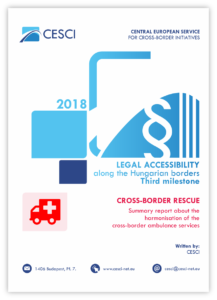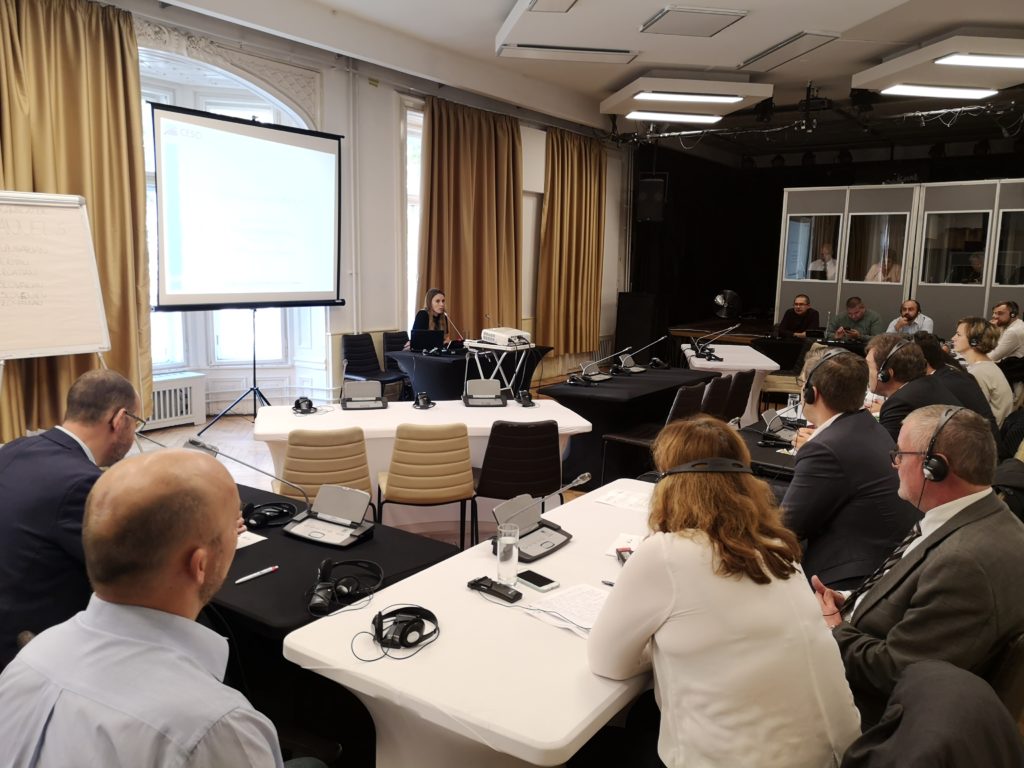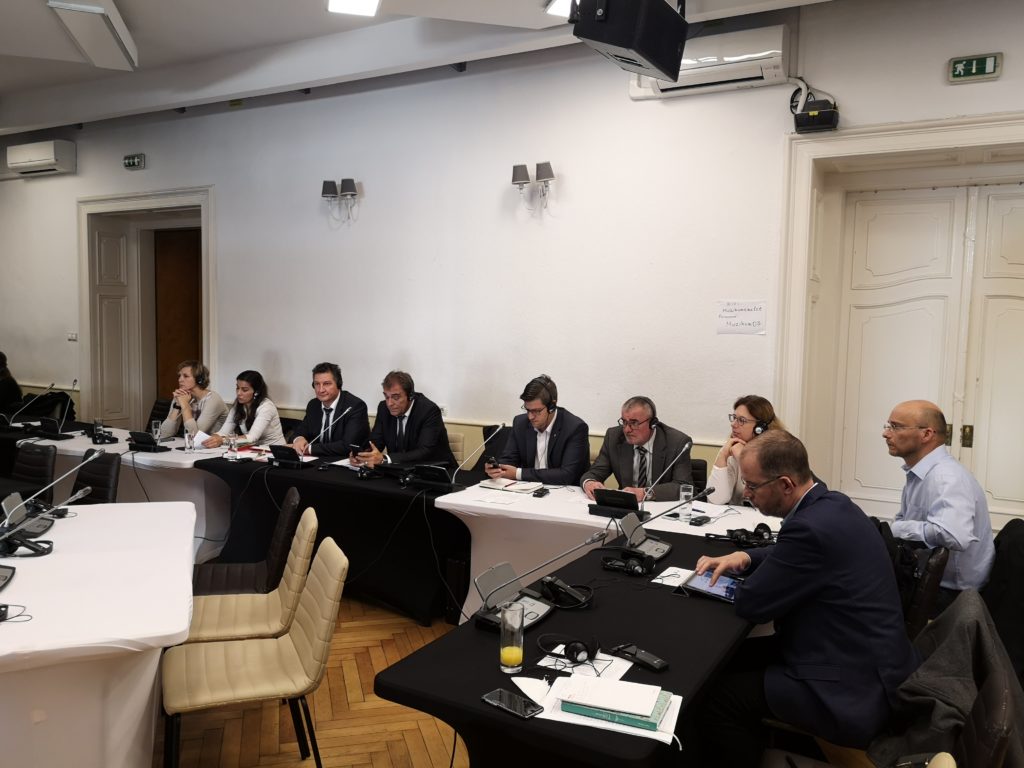Objective
In the framework of the subproject, we continued the work that we started during the previous two Legal accessibility projects, further facilitating the development of the cross-border rescue discourse between Hungary and the neighbouring EU Member States. While we analysed the Hungarian regulatory environment in the framework of the 2017 project, in 2018, we tried to explore the position of the authorities of neighbouring countries, and their existing policy guidelines in relation to the topic, which brings us closer to the formulation of the proposals on multilateral harmonisation of legislation.
Download
The summary report prepared in the frames of this subproject can be downloaded by clicking on its cover below.
Implemented activities
In the framework of the subproject, we contacted the relevant cross-border institutions and with the help of the interviews made with those regionally competent (seven persons) in four neighbouring countries (Austria, Croatia, Romania, Slovenia), we gathered information on the operation of the rescue and emergency service. Following the personal interviews, we organised an international, interactive, professional seminar in Budapest, on 13 November in Kossuth Klub, which aimed to establish personal contacts between those affected and to summarise the possible frameworks of the regulatory harmonisation. 28 experts participated in the seminar.


The participants of the ambulance seminar in the Kossuth Klub
While according to the interviews, comparing the rescue system of neighbouring countries became possible based on the criteria (organisational structure, financing, system of the rescue unit, time limit for arrival, order of border crossing, operating licenses, use of emergency vehicle lighting, administrative-technical conditions, emergency call centres, radio systems, language factor, openness of cooperation) defined in the previous legal accessibility project, the experts had already discussed the steps that are needed to overcome the obstacles during the seminar.
Proposals
As a result of the subproject, on the one hand, it was determined which further actors would be needed to continue the cooperation. On the other hand, operational proposals have also been formulated, such as: development of a contact mechanism; establishing an international certification system and a common certification; setting up national coordination centres; establishment of interpreting services; development and harmonisation of TETRA radio networks and equipments.
Perspectives
It is possible to continue the project on 3 levels, but in parallel, keeping in mind the synergies:
- the problems, obstacles and solutions identified within the framework of the project should also be reviewed at EU level by addressing EU institutions that are supporting legal harmonisation;
- the already ongoing professional negotiations should continue for bi- or multilateral harmonisation with the involvement of national central bodies;
- at local level, even at each border section, it would be necessary to develop and strengthen personal, professional relations.